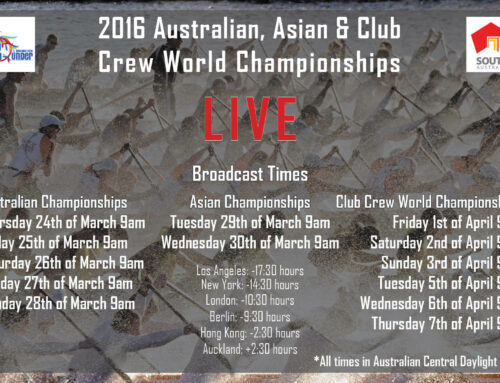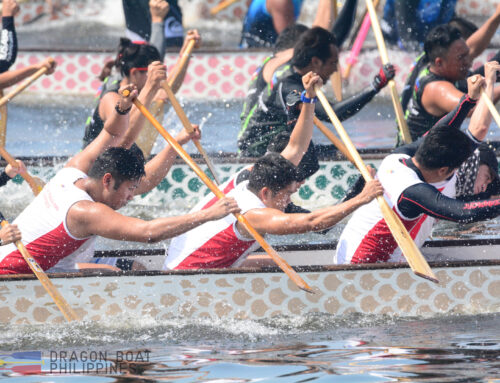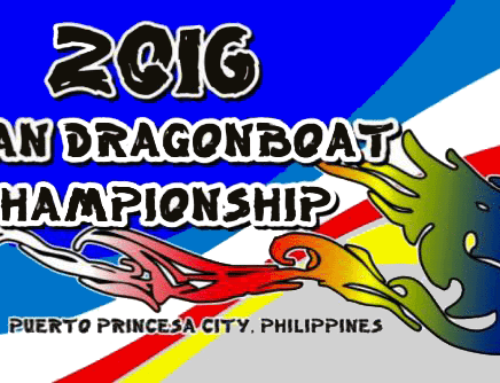It’s difficult to imagine Noelle Wenceslao intimidated by anything. What else would you expect from one of the first three Filipinas to summit Mt. Everest but courage and raw athleticism? The way she talks about her return to dragon boat from that historic climb however, is surprising: “Back then, when I’d bike to training, I’d say a little prayer: ‘Please don’t let me mess up today, let me perform well today.’”
Then again, Noelle is full of contradictions. After all, much of her youth was spent as a sport-phobic Mathlete from an all-girls’ Catholic school. “Once, we had to join a competition in UP, ‘Mathira Mathibay’. When I first saw the joggers around the Oval, I was like, ‘Eww, pawis!’”
Something about dragon boat clicked, however, and after 15 years of paddling, her passion for the sport remains palpable. “I loved it the first time I tried it. It never had to grow on me. It was like love at first sight—and I don’t even believe in that with people.”
How did you get started in dragon boat?
Noelle: I started when I was a freshman in UP. I saw the UP Dragon Boat Team recruitment booth at the AS Walk while walking with one of my classmates. I even thought, “Eww, I don’t want to do that, I don’t want to get dark!” But after my classmate and I parted, I doubled back and signed up. I guess it was because I noticed that a lot of people from high school get fat in college, and I was chubby-ish. So I said, “I’ll try dragon boat para hindi ako tumaba.”
I didn’t immediately report to training, I snuck near the loading area
You mentioned to me once that you weren’t an athlete back in high school. So dragon boat was actually your first sport?
N: Ever! Before that, I had no interest in sports. In fact, I hated sports.
In high school, I was mainly active in math competitions. I have to give credit to my dad for trying to influence me in sports. He bought me a mountain bike in high school, but at first I was like, “Papa, why?” We’d go biking together, because I had no brother at wala siyang mabitbit. So despite my whining, I would go with him. Papa would take us trekking, camping or mountain biking, and I appreciated it—they weren’t competitive sports.
I was good at all the subjects, except P.E. I was always the last pick when we’d have sports in P.E.—the team captains would just stare at each other. I was only exposed to standard P.E. sports, like volleyball, basketball, soccer, and kickball, and I sucked at all of them. So I came to the conclusion that I hated sports.
I only tried out dragon boat because I figured, “something lang para hindi ako lumobo. Whatever!”
What made you stick with dragon boat?
N: My first training day was July 10, 1998. Since the first time I sat on the boat, I never got out. I think it was the camaraderie with the UP Dragon Boat Team, who were welcoming with me.
I was 18 years old—the youngest person on the boat—so I was the team baby. They took care of me. Since I wasn’t an athlete, they tried to get me running, they’d teach me how to do push-ups, everything. They taught me everything from zero.
The camaraderie was very conducive for loving dragon boat. Kaya ako bumagsak ng Computer Engineering—I’d be outside my classroom but chatting with my teammates. Yes, I got kicked out, because I didn’t even bother dropping subjects. I was too busy paddling to drop subjects. I’d be absent for finals because I was competing in Australia.
In the end, it was really just about finding my sport—one that I can do well (despite my height), feel passion for, and really appreciate.
So dragon boat eventually led to other sports?
N: In the UP Dragon Boat Team, there were triathletes, there were mountaineers. Damay-damay lang. We started with jogging, and I eventually improved, so they said, “Let’s join an Adventure Race!” After I joined the Adventure Race, they said, “You suck at off-road. Join UP Mountaineers so you can develop that.” So one sport led to another, from Adventure Racing to the UP Mountaineers to triathlons. That’s what got me to Everest. Everything started from dragon boat talaga.
In a way, you’re lucky that you discovered dragon boat relatively early. Most people get into it at the tail end of college, or when they’re professionals and they’re looking for a new sport.
N: Yes, but if I hadn’t discovered it early, di natapos ko yung Engineering, di ba? [laughs]
When I got kicked out of engineering, I spent two years as a non-major. Then I started begging CHK (the College of Human Kinetics) to take me in. They told me, “Hindi kami patapon ng mga bagsak ng Engineering!”, and I was like, “But I love sports. I’m not crawling to you because I don’t have a choice.” There’s a stigma against CHK being seen as a “patapon” college, so they made it harder for me to get in. Eventually, after camping outside of the Dean’s office every day, I was admitted to CHK.
So by then, you were already open to the sports you hated in high school?
N: No, I still sucked. [laughs] Until now, I can’t say I’m a sporty person. I’m a dragon boat person lang.
Let’s talk about Everest. What was the training like?
N: We spent 2004 to 2007 training for Everest. It was a whole different project. In dragon boat, we would mostly train with weights. With Everest, it was a lot of running, a lot of endurance training. When the project was launched by Sir Art [Valdez, former Transportation Undersecretary] in 2003, they recruited around 40 mountaineers from around the Philippines. We were called candidates. We had to commit ourselves for three years, so if you had a job, you quit. I had the National Team, so I had to give that up, because Everest was an opportunity I could not pass up.
We [the Pinays on Everest contingency, which included Janet Belarmino and Carina Dayondon] had to be athletes as well as marketing people for ourselves, doing stuff like looking for sponsors. It was a passion project, so we had to do everything from the ground up. We weren’t making money and there was no allowance, but Sir Art’s enthusiasm was very contagious. It’s the same goal as dragon boat—when you see that the country is winning, when you’ve accomplished a goal for the Philippines, you remind all the Filipinos of how good we are and what we could do.
How did you re-join the National Team?
N: I couldn’t immediately go back to dragon boat after the climb, because in 2007-2008, we did tours around the Philippines to give talks in schools. The other reason was because I felt intimidated. Despite Everest and everything, I saw the new line-up—they looked scarier because there were new recruits who were BIG. Big and tall and massive and not at all like that team I left, where there were other smallish girls. I felt that they leveled up.
I got to return when one of the ladies got sick, and Sir Nestor Ilagan [the late head coach of the PDBF] was looking for someone to replace her in the 2008 Asian Championships in Penang. He called me up, saying, “this is not an official tryout ha, we just really need someone to fill in a seat on the left side for one race.” As in, I was the reserve of the reserve.
When we returned from Penang, I asked Sir Ilagan if I could officially try out for the National Team again. But the thing was, they had height and age parameters, and I was below the height parameter and above the age parameter. I told the coaches, “If you don’t like me, the worst you could do is not accept me, and I’ll take that. Try lang naman e.” Eventually, I got in, so that’s how I’m here now.
What motivates you to stay in the sport? A lot of people perceive it as difficult, because of the early call times and the prospect of getting splashed by Manila Bay.
N: For me, the motivation to work out keeps me in dragon boat. It’s very hard for me to get up in the morning and jog by myself. Without the team, I don’t think I’d even work out—it’s like you’re all fitness buddies.
I’m just speculating, but the camaraderie of a dragon boat team is very tight knit because we have to be synchronized. There’s no “Best Paddler,” unlike basketball where there’s a star player. Or maybe, it’s because you’re not scattered across a court. In dragon boat, you’re inches away from each other the whole time. Even if you’re resting in between sets, you’re still beside each other.
I feel that with dragon boat, what brings you together is that you and your teammates are passionate with what you’re doing, even if it’s hard. You wouldn’t wake up at 4 A.M. and you wouldn’t go through all the back pains if you didn’t love it. Whoever is sitting next to you loves it just as much—that’s what makes the bond strong.
Hindi na rin ako nasisiraan ng tiyan. I can travel and drink the tap water and be like, “Whatever, tinatalsikan nga ako sa bibig ng Manila Bay e.” After years of paddling in the bay, I feel that I’m stronger in terms of immune system [laughs].
What are your personal highlights from your paddling career? Are there any races or wins that stand out?
N: I celebrate July 10, the anniversary of the first day I paddled. I treat myself or Claire [Montemayor-Maico, another paddler with the National Team] to eat out. I also text everyone that it’s my anniversary, not that they should care, but it matters to me and I’m happy just texting it.
September 6, 1998 was my first race ever. It was the first time I ever wore a sando—in life. Siyempre I was pale and jiggly then [laughs]. Since it was my first race, getting into the line-up was more important to me than winning—my concerns weren’t as team-oriented yet. For me, baby steps lang—I started training, I wore a sando for the first time, they gave me a team uniform, I got a seat on the boat, I got to paddle.
Of course, Penang in 2008 matters to me, because that’s the race that got me back into the National Team. After that, the 2007 and 2009 World Championships in Sydney and Prague are memorable to me, because the Philippines set world records [for fastest time] there. Then most recently, Milan [last August, 2012], because we won six golds out of seven events.
What do you have to say about the state of Philippine dragon boat today?
N: I feel that the sport has been growing. Steadily, the teams are increasing, especially in Manila. It’s just like an infection, and we have to infect other provinces. For example, if there’s one team in Camarines Sur, there will be other teams there eventually.
This past PNG [Philippine National Games], I was surprised to find teams from Iloilo, Bicol, Bohol, Laguna, and Butuan. We’re gradually spreading the sport around the country. Because the Philippines does so well in dragon boat, I really hope it spreads. I hope it gains more popularity in the provinces because we’re a coastal country, and there are so many great venues for training. If this becomes more mainstream, even the National Team will improve because we’ll have a deeper pool of athletes to choose from. We’d be able to have tryouts all across the country. The thing is, Filipinos are natural paddlers because we come from a culture of fishermen. Like Lake Buhi [a team from Camarines Sur], they can easily synchronize with the National Team, kasi sumasagwan sila araw-araw.
We’re sure the other teams—the white people teams, like Russia—train hard as well, but for some reason that I cannot yet explain, maybe the Filipino body or the Filipino psyche is good for dragon boat.
Would you say that we’re on par with, or better than, other Asian teams, like China?
N: I would say that the best National Teams in dragon boat are in Southeast Asia. Even if you say, “I went to Europe to compete and I won in Europe,” the toughest competition would have still been from Southeast Asia and China. Europeans are really good at long distances, but they haven’t beaten us in the 500-meter and 200-meter categories.
We just came from the DBS Marine Regatta in Singapore, where the scary teams were the Philippines, Myanmar, Thailand and Indonesia. We had super-high morale because we placed silver overall. As in those four countries lined up for the finals, along with Singapore, then the Singaporean host gave a speech: “Good luck to all the racers! And Team Singapore, whatever happens in this race, we love you.” Their own countryman was already giving them a loser speech!
The only team that placed above us was Myanmar, whom we beat in the 200-meter category. What happened in the 200-meter race was, we placed third. Indonesia came first, then Thailand, then the Philippines, then Myanmar. In the 500-meter race, Myanmar was first, then we took second. We beat Thailand and Indonesia. We beat Myanmar in the 200-meter races, and the teams that beat us in the 200-meter races, we beat in 500 meters. We beat all the teams, just not at the same time. Those teams were the world’s best, and the Philippines is at par with them.








